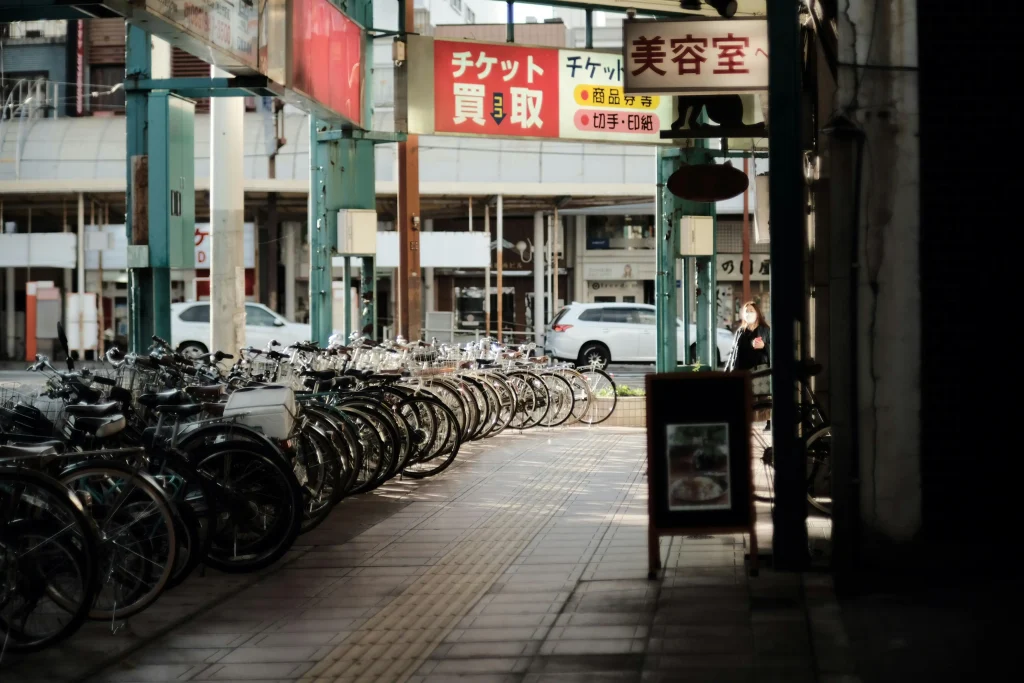Japan is known for its modern, convenient, and ultra-efficient transportation system. Whether you’re planning to explore Tokyo, Kyoto, or the mountains of Hokkaido, you’ll find a variety of well-organized and punctual transport options. This guide is designed to orient you and answer all questions about transportation in Japan, especially if you’re visiting the country for the first time.
1. Understanding Japan’s Transportation Network
The transportation network in Japan primarily includes trains, subways, buses, taxis, and ferries. This system is particularly appreciated for its punctuality and accessibility. Numerous options are available for travelers, making it easy to navigate both urban and rural areas.
To Avoid: Failing to plan your trips, especially if you’re visiting rural areas where bus schedules are less frequent. Delays in your schedule can quickly add up if you miss a bus or train.
2. Trains and Subways: The Most Popular Modes of Transportation
The train is the most commonly used mode of transportation in Japan, including the famous Shinkansen, or bullet train, which connects the country’s major cities. The rail network is primarily managed by Japan Railways (JR), offering a variety of local and long-distance lines. The subway is dense in large cities like Tokyo, providing fast mobility for daily commutes.
| Aspect | Train (JR and Shinkansen) | Subway |
|---|---|---|
| Speed | Very fast (300 km/h for the Shinkansen) | Fast (especially during rush hours) |
| Fares | Vary depending on distance (1,000 to 20,000 JPY ~ €6 to €130) | 150 – 500 JPY (€1 to €3) on average |
| Comfort | Very high for the Shinkansen | Moderate, depending on crowd levels |
| Accessibility | All major cities and regions | Primarily in large cities |
| Advantage | Speed for long distances | Convenient for urban travel |
For more information on train schedules and fares: Hyperdia and Japan Railways.
To Avoid: Taking a train without checking if it’s local or express. Express trains often pass through the same stations but don’t stop at all of them, so you could miss your stop.

3. The Shinkansen: Japan’s High-Speed Train
The Shinkansen is synonymous with speed and comfort, allowing travel between Tokyo and Osaka in just 2.5 hours. This train is also known for its safety and punctuality. For tourists, the Japan Rail Pass is a valuable asset for unlimited travel on JR lines, including some Shinkansen lines.
Shinkansen Fares (Tokyo – Osaka):
- Standard: about 14,000 JPY (€90)
- Green Car (Premium): about 19,000 JPY (€120)
For more information: Japan Rail Pass
To Avoid: Buying a Shinkansen ticket at the ticket counter during rush hours. Lines can be long, and seats limited.
Tip: Book your ticket online or purchase a Japan Rail Pass for easier access.

4. Japan Rail Pass: An Essential Pass for Tourists
The Japan Rail Pass allows foreign travelers to make significant savings by offering unlimited access to JR lines for a set period (7, 14, or 21 days).
Japan Rail Pass Prices:
- 7 days: 29,650 JPY (€185)
- 14 days: 47,250 JPY (€295)
- 21 days: 60,450 JPY (€375)
The pass is available online or at some Japanese airports. Purchase it online on the Japan Rail Pass website for the best prices and fast delivery.
To Avoid: It’s recommended to buy the Japan Rail Pass in advance from abroad before traveling to Japan. Buying it in advance offers better rates and avoids paying a higher price if purchased directly in Japan.
5. Prepaid Transport Cards: Suica and Pasmo
The Suica and Pasmo cards are prepaid and offer great flexibility for public transportation. They save time by avoiding individual ticket purchases and are accepted on most transport options, including some taxis.
Comparison between Suica and Pasmo:
- Suica: Primarily valid on JR lines in Tokyo and surrounding areas.
- Pasmo: Compatible with private networks in and around Tokyo.
Initial purchase cost: 2,000 JPY (€12.50) including a refundable deposit of 500 JPY (€3).
Purchase Suica or Pasmo cards here: Pasmo.
To Avoid: Using a prepaid card without checking the balance. Frequent recharges are important to avoid interruptions due to insufficient funds.
6. Taxis in Japan: Convenient but Costly
Japanese taxis are comfortable and safe, but they can be costly, especially compared to the subway and trains. The base fare in major cities is around 430 JPY (€3) for the first 1-2 km, with prices rising incrementally by distance.
Estimated cost for a 10 km trip in Tokyo: Approximately 4,000 to 5,000 JPY (€25 to €32).
To Avoid: Taking a taxi for long distances within the city, especially during rush hours when fares can rise quickly.
Tip: Taxis are ideal for short trips or when public transport is no longer running.
In Japanese cities, especially Kyoto, shared and rental bike systems are common and well-maintained. Rental fees range from 500 to 1,000 JPY (€3 to €6) per day.
Examples of shared bike services: Docomo Bike Share and Kyoto Eco Trip.
To Avoid: Disregarding bike parking rules. Improperly parked bikes may be confiscated.

8. Renting a Car in Japan: Pros and Cons & Booking Tips
Renting a car in Japan is an excellent option for those wanting to explore remote areas, scenic countryside, or off-the-beaten-path destinations like Hokkaido, Okinawa, or the Japanese Alps. It gives you the flexibility to travel at your own pace, away from busy train schedules or public transport.
Good to know: An International Driving Permit (IDP) under the 1949 Geneva Convention is required. Drivers from some countries like France or Germany may also need an official translation of their license in Japanese, available through the Japan Automobile Federation (JAF).
Book with Confidence Using DiscoverCars
Want to secure the best price and vehicle before your trip?
DiscoverCars is a trusted platform used by millions of travelers to compare rental agencies in Tokyo, Osaka, Kyoto, and beyond.
Why we recommend DiscoverCars:
- Free cancellation on most rentals
- Transparent pricing with no hidden fees
- English customer service
- Vehicles available at airports and rural locations
- Easy-to-use search tool
Pro tip: Book your rental car early for better rates and availability — especially during peak travel seasons like cherry blossom or Golden Week!
9. Driving in Japan:
- Obtain an International Driving Permit (IDP): Valid for one year, obtained in your home country before departure.
- Translation required for some countries: Belgian, Swiss, and German drivers, among others, must have their license translated by the Japan Automobile Federation (JAF) for about 3,000 JPY (€20).
- Conditions: The IDP must follow the 1949 Geneva Convention. After one year, a Japanese license will be required.
10. Practical Tips for Using Transport in Japan
- Useful Apps: Hyperdia and Google Maps for real-time route planning.
- Avoid rush hours: Subways and trains can be extremely crowded between 7-9 AM and 5-7 PM.
- Recharge your Suica/Pasmo regularly to avoid ticket machine lines.
11. Transportation Costs in Japan: A Price Guide
| Transportation Mode | Approximate Cost per Trip | Cost in Euros |
|---|---|---|
| Subway (Tokyo) | 150 – 500 JPY | €1 – €3 |
| Shinkansen (Tokyo – Osaka) | 14,000 – 19,000 JPY | €90 – €120 |
| Taxi (10 km) | 4,000 – 5,000 JPY | €25 – €32 |
| Car rental (per day) | 6,000 JPY | €38 |
| Bicycle (per day) | 500 – 1,000 JPY | €3 – €6 |
Conclusion
Transportation in Japan is efficient and well-organized, offering travelers a wide range of options to explore the country. To make the most of transportation in Japan, a reliable internet connection is essential. Check out our guide on SIM cards for Japan to stay connected and easily access schedules and routes during your trip.
1. Is it easy to get around Japan without speaking Japanese?
Yes, transportation in major cities and stations is well-marked in English. Navigation apps like Google Maps and Hyperdia also allow you to follow routes in English.
2. Are there discounts for children on Japanese transportation?
Yes, most public transportation in Japan offers discounts for children. Children under 6 often travel free when accompanied by an adult, while those aged 6-11 generally get a 50% discount.
3. Do Japanese transportation options accept foreign bank cards?
Most major train lines (like the Shinkansen), stations, and airports accept international bank cards for ticket purchases. However, local buses and smaller stations may only accept cash or prepaid Japanese cards like Suica and Pasmo.





